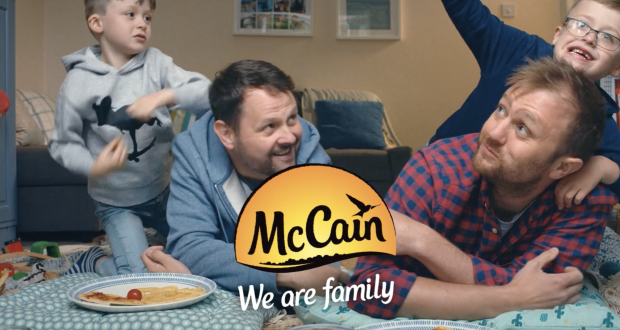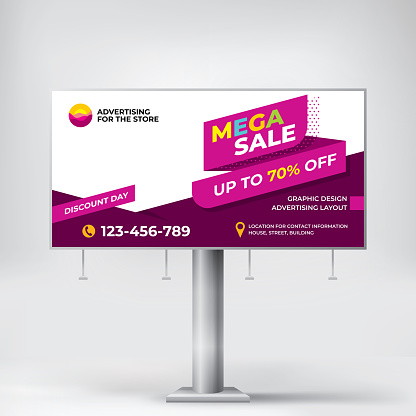
Outdoor billboard marketing has proven to be an effective way of marketing for many companies. A modern, well-maintained and maintained billboard can make a big difference for a business. But there are rules and guidelines that must be followed when selecting an outdoor advertisement space.
It's essential to learn about the industry before choosing an outdoor advertising space. Bulletins, billboards and digital displays are some of the most commonly used outdoor advertising spaces. Each billboard type has specific specifications to appeal to advertisers. You need to determine what type and budget you have in order to create the ad.
Potential customers will judge the effectiveness of an advertisement by its size. A larger ad is more appealing to potential customers. Many companies offer a range of sizes and locations for their billboards. Most billboards are at least fifty feet from the viewer. You can make your ad larger to reach more people.

If you plan on using an illuminated billboard, you'll need to make sure that it is equipped with the proper lighting. Most billboards can be lit from dawn to midnight. Outdoor billboards also have bulletins and bus stops. The most widely used format is the bulletin, but you can also find other types of outdoor units.
A market ride is required to determine the best places for billboards. This is where agencies and advertisers determine the best location. This is also known as a "pre-ride", and it allows media owners to select the best billboard for their advertising campaign.
One of the oldest forms for communication is billboards. Outdoor advertising has become more competitive and companies are searching for billboards to give them an edge. Getting the right technology can make a big difference between cutting through the clutter and bringing in the sales.
When choosing an outdoor ad space, it's best to have a clear understanding of how to calculate your cost per day. The cost per day is the amount an advertiser is willing to pay each day. It's the same as the cost per click in online advertising.

The creative brief is a document that explains your marketing goals and what you are aiming to achieve with your ad. This helps you to identify your target audience. The creative brief could include your company logo, a tentative schedule for the campaign, and a description of the product/service you are marketing.
After you've determined the location of your advertisement, you must decide the size and design of your billboard. The most common dimensions are 1500x500 h or 1800x500 h.
FAQ
What do you need to know about internet advertising?
Internet advertising is an integral part of any business strategy. It allows companies to reach potential customers at low costs. However, there are many different types of internet advertising available. Some are completely free while others require payment.
There are several options for advertising on the internet. These include banner ads, pop-up advertisements, search engine optimization (SEO), PPC (pay-per-click) advertisements, social media and mobile marketing. Each method comes with its own set of advantages and disadvantages.
What is an advert buyer?
An advertiser buys advertising space on TV, radio, print media, etc.
Advertisers pay only for the time their message is to appear.
They don't necessarily look for the best advertisement, but instead seek out the most effective way to reach their target market.
The advertiser may have specific demographic information about their potential customers, such as age, gender, income level, marital status, occupation, hobbies, interests, etc.
Advertisers can use these data to determine the best medium for them. Direct mail might be more effective with older customers, for example.
Advertisers also look at the competition. If there are similar businesses nearby, they might choose to place their ads near those competitors.
Advertisers should also consider the budget they have and how long they plan to spend it before it expires.
Why not use social media advertising for your business?
Social Media Marketing, or SMM, allows you access customers directly on social networks, such as Facebook, Twitter LinkedIn YouTube YouTube Google+. You can also target specific segments within these networks with keywords.
This advertising strategy is cost-effective as it costs less than traditional methods to market online. It allows you build strong relationships between your potential and existing clients.
It is easy to use social media to promote your company. All you need to get started with social media is a smartphone or a computer, and an internet connection.
How can you choose your target audience?
Start with yourself and those closest to your heart. If you don’t know where or how to start, ask yourself "Whom are I trying to reach?"
Ask yourself these questions: Who do you consider the most influential in your industry? What are the problems they face daily? Who are the smartest people in my industry? You can find them online.
Go back to the beginning when you started your business. Why did your start? What problem did you solve for yourself, and how did you do it?
These answers will help identify your ideal clients. Learn more about them and why they choose to do business with you.
You can also look at your competitors' websites and social media pages to find clues about whom they cater to.
Once you identify your target customers, then you must decide which channels to use to reach these people. You might, for example, create a website to target home buyers if you offer services to real-estate agents.
You could create a blog if you offer software to small business owners.
If you sell clothing, you can create a Facebook fan page for teens. Or if you're a restaurant owner, you could set up a Twitter account for parents looking for kid-friendly places to eat.
This is the point: There are many ways to communicate your message.
What is an ad-campaign?
An advertisement campaign is a series containing advertisements to promote a product. It could also refer the entire production of such advertisements.
"Ad" is a Latin word that means "to sell." Marcus Terentius Varro (116–27 BC), the first known user of the term "ad" used it to mean "to make sales."
Advertising campaigns are usually done by large companies and agencies. There may be many media types involved, including print and television as well as radio, TV, and internet.
Advertising campaigns usually last several months, and they have specific goals. Some campaigns are designed to increase awareness, while others aim to increase sales.
How much does it cost for social media advertising?
This route is not for everyone. You will be charged monthly for your time spent on each platform.
Facebook - $0.10 per 1,000 impressions
Twitter - $0.20 per 1,000 impressions (if you tweet)
Send out invitations on Linkedin for $0.30 per 1000 impressions
Instagram - $0.50 per 1,000 impressions.
Snapchat - $0.60 per 1,000 impressions ($0.40/user)
YouTube – $0.25 per 1000 views
Tumblr - $0.15 per 1,000 impressions for text posts.
Pinterest - $0.05 per 1,000 impressions per month
Google + $0.15-$0.20 for 1,000,000 impressions
Tumblr - $0.15- $0.20 per 100,000 impressions
Vimeo – $0.20- $0.25 Per 10,000 Impressions
Soundcloud - $0.20 to $0.0.25 per 1 Million Plays
StumbleUpon - $0.20 -$0.25 per 1 billion pageviews
Digg - $0.20 - $0.25 per 1000 diggs
Reddit - $0.20 - $0.0.25 per 1000 Comments
Wordpress – $0.20--$0.25 Per 500 Comments
Flickr - $0.20 -- $0.25 per 5,000 photo uploads
What is affiliate Marketing?
Affiliate marketing can be described as an online business model. You earn commissions by referring customers who purchase products and/or services on other websites. You get paid by the product owner when someone buys from them.
Affiliate marketing is based on referrals. To get people to buy from your affiliate marketing, you don't have any special requirements. All they have to do is to refer them the website.
Making money doesn't require any hard selling. It's easy to sell just as much as it is to purchase.
It takes just minutes to set up an account as an affiliate.
The more you refer people, the more you'll receive commission.
There are two types:
-
Affiliates who have their website owned by them
-
Affiliates who work in companies that offer products or services.
Statistics
- Advertising spending as a share of GDP was about 2.9 percent. (en.wikipedia.org)
- Advertising's projected distribution for 2017 was 40.4% on TV, 33.3% on digital, 9% on newspapers, 6.9% on magazines, 5.8% outdoor, and 4.3% on radio. (en.wikipedia.org)
- Google will display whichever ad type (CPM or CPC) is expected to earn more revenue for the publisher, which is in Google's best interest since they take a 32% share of the revenue. (quicksprout.com)
- Nonetheless, advertising spending as a share of GDP was slightly lower – about 2.4 percent. (en.wikipedia.org)
External Links
How To
How to run ads that are paid
Paid advertising refers to any marketing activity where you pay money for something. This could be purchasing advertising space on the internet, placing ads in newspapers and magazines, as well as paying someone to promote you business online. You can also pay for paid advertising through email marketing, social media, display advertising and search engine optimization (SEO), as well as mobile app promotion and influencer marketing.
It is important to understand the costs of your campaign as well as the results you are expecting. It is also important to determine if you will get enough return on your investment (ROI).
Before you can start a paid marketing campaign, you need to first identify potential customers for the product or service. If you have no idea, then start with free advertising like posting flyers around your neighborhood, making announcements at school, or sharing your message through social media sites.
Knowing your target audience will help you decide the best way to reach them. Advertising in classifieds in local newspapers is a good way to advertise if you sell organic food. For cosmetics sales, it might be more advantageous to advertise on radio and TV.
Once you have decided who you want to reach out to, it is time to determine how much money you are willing to spend. There are several ways to calculate your budget. The first is to divide the budget into daily or weekly, monthly, quarterly, annual, and/or quarterly amounts. You can also use a spreadsheet program.